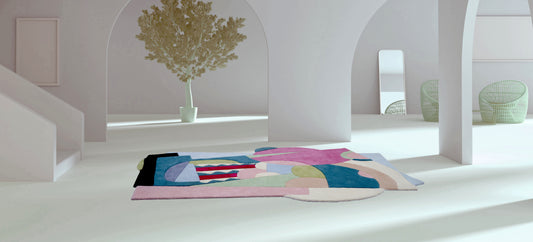What was once just a nascent idea fuelled by a passion for art, has today become an international constellation of museums, including the Solomon R. Guggenheim Museum, New York; the Peggy Guggenheim Collection, Venice; the Guggenheim Museum Bilbao; and the future Guggenheim Abu Dhabi.

The Solomon R. Guggenheim Foundation was started in 1937, but the Museum of Non-Objective Painting, which was its first venue for the display of art, opened in 1939. This was only the start to how many visitors would have their first encounter with great artworks by even greater artists at the Guggenheim museums.
“As it grew on me . . . I wished others to share my joy.”
Solomon R. Guggenheim
Is what Solomon R. Guggenheim had to say about his interest in contemporary abstract art, which is something he turned to much later in life. Solomon Robert Guggenheim was born in Philadelphia, 1861 to Meyer Guggenheim, a Swiss-born businessman, his family fortune came from engaging in mining. Guggenheim and his wife, Irene Rothschild Guggenheim, began collecting artworks in the 1890s, but only conventional art belonging to the old masters. It was only in his late 60s that Guggenheim was introduced to Hilla Rebay, who had been commissioned by his wife Irene to paint his portrait. She was a German abstract painter and collector and would soon become his gateway to Modern art.

Baroness Hilla Rebay von Ehrenwiesen, (1890–1967) was born into a minor aristocratic family in Alsace and was considered artistically gifted from an early age. She immigrated to the United States in 1927 and opened a studio, it was there that one of Rudolf Bauer’s abstract artworks caught Guggenheim’s attention and became a topic for conversation, this was the start of a lifelong friendship between the two.
“Non-Objectivity will be the religion of the future,”
Hilla Rebay
In 1930, Rebay accompanied the Guggenheims on their trip to Europe, among other artists, they met Kandinsky at the Dessau Bauhaus. Kandinsky’s ideologies on spirituality and abstraction, or non-objectivity as she called it, had a major influence on Rebay both as an artist and as a collector. Guggenheim purchased Kandinsky’s Composition 8, only the first of what would be 150 works of the artist to enter the Guggenheim collection later.
For the next two decades, Rebay and Guggenheim collected and encouraged non objective painting with a passion. Guggenheim purchased works from Bauer, Kandinsky, Delaunay and László Moholy-Nagy. Other aspects of modern art were also taken into consideration, with works by Marc Chagall, Albert Gleizes, Fernand Léger, and Amedeo Modigliani. But Rebay continued to dream of a “museum-temple,”a spiritual experience where viewers could commune with non-objective art.

In 1943, Solomon Guggenheim commissioned the legendary architect Frank Lloyd Wright to build a permanent museum. Through its magnificent design, consisting of an open plan and spiraling ramp it personified the ideals of nonobjectivity. Unfortunately both Solomon Guggenheim and Frank Lloyd Wright passed away prior to the completion of this project. Wright professed to despise all cities but none more than New York, but today his design has become one of the most iconic landmarks of NYC. This remarkable structure not only houses the Guggenheim collection but has become an object of the Guggenheim collection itself.

The Guggenheim Museum has become one of the wealthiest museums devoted to Modern art in the world. The Guggenheim Foundation remains dedicated to collecting, preserving, and most importantly promoting the appreciation of contemporary art through exhibitions, education programs, research initiatives, and publications around the globe.








